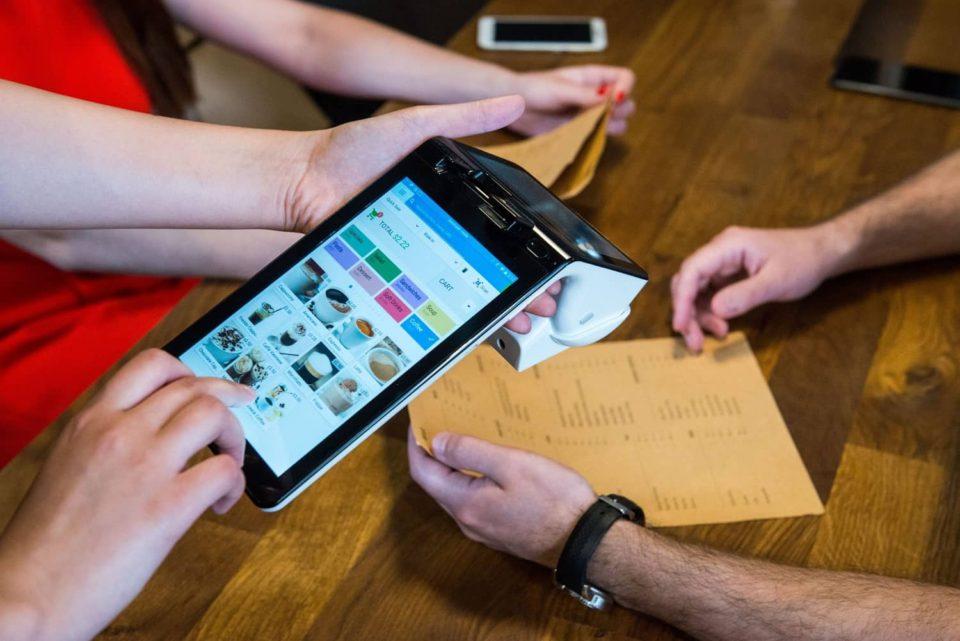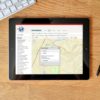Mobile point of sale (POS) systems are really popular right now, so it’s normal to wonder how much it would cost you to get one. They have a myriad of benefits, including that your employees will be able to access a standard POS with a mobile device, usually a tablet or Smartphone. Mobile POS systems include a wide array of features that support your business operations, including integrated customer loyalty programs, technologies customized for your brand, and detailed reports on sales and inventory.
Sample Prices of Mobile POS Systems
Prices can vary based on a variety of factors, including the company you decide to purchase the system from, the features you choose, how many terminals you require, and the number of users. Price is also affected by reporting functionality and storage space. Use the following estimates when developing your budget and comparing vendor proposals.
- To register a mobile device with the POS system, you’ll need to pay $90 per device on average. More specifically, the cost is $80 and $100 per device
- Hardware, including credit and debit card readers, countertop receipt printer, and a cash drawer averages between $500 and $800
- Transaction fees go from $0.10 to $0.25 per transaction on average
- 24/7 tech support can cost you $20 to $40 extra
- Expect to pay 40 dollars a month, including 24/7 live support. The cost ranges from $30 to $60
- If you need extra licenses, expect to pay around $400 per month for unlimited licenses, around $130 per month for two licenses, up to $250 for five licenses
- The cost of running credit cards averages 2.5 percent per purchase
Pros of the Best Mobile POS Systems
When shopping around for a mobile POS system, look for one that features inventory, purchasing, sales, and customer demographics. With the help of these analytical tools, you can order new goods automatically, track patterns, or design promotional campaigns.
Also look for integrated payroll information that allows you to use the system as a timecard program, to track personal leave, calculate pay, and estimate overtime. The owner or manager can pull information from any location, using any connected device, when he or she needs a quick snapshot of scheduling and payroll.
Integrate your customer loyalty program with your POS system. This makes it easy to run promotions and, even better, collect valuable data about your customers for pinpoint marketing and promotions.
What to Look for when Choosing a Mobile POS System
Integrated customer relationship management (CRM)
If you’re still not using a CRM system, start right away. If you are, integrating it with your POS system helps you develop amazing loyalty program offerings and create highly targeted promotion. This will help attract more customers, some of whom will convert, ultimately improving your bottom line. And that’s what it’s all about – the profit. A mobile POS will free up time and limited the effort needed to run and manage a business from day to day. If you’re in the restaurant business, it will be a relief to not have to be there all the time. As with any other business, by the way.
Preconfigured hardware
It’s always worthwhile to invest a little bit more in preconfigured hardware. Look for a system that allows you to tailor barcode scanners, scales, and other hardware to meet the demands of your business.
Features
Mobile POS system features help determine the overall price, so compare the features you must have and those you might need to help manage your costs. Talk to staff and other organizations within your industry to get a better grasp of which features you’ll need on a regular basis and which never see the light of day.
Security and access: These systems are nearly always cloud-based, so look for a vendor who offers quality security and restricted user access to protect you, your staff, and your customers’ data.
Credit card processing fees
These aren’t technically a price factor, but it would be worthwhile to touch on this expense because many POS providers are offering integrated merchant account services these days. In some cases, you must use the POS provider itself as your merchant account. In others, a POS will pair with a handful of merchant accounts from which you can choose.
The monthly service price you pay can be comparable with the rate you’ll pay for credit card processing in cases where the POS provider is also the merchant account provider. For example, with Square you won’t be paying any monthly fees, but you’ll pay almost 3% in credit card processing fees. With Shopify POS, you’ll pay 2.4% with the $79/month “Pro” plan, or 2.2% with the $179/month “Unlimited” plan.
It may be possible to choose between your existing merchant account or POS’s in-house processing solution. For example, ShopKeep offers processing through ShopKeep Payments. If you choose Toast, you can only use Toast’s in-house payment processing. You can use Clover Connect to get a Clover Station merchant account or opt for another merchant account provider like Bank of America.
Total Cost Of A POS System
Overall, a single-register business can expect to pay around $1,000 per year to use the POS software as well as about $1,250 for their initial investment. The fee per year includes updates and customer support, but not including credit card processing transaction fees.
Final Thoughts
So how much does a mobile POS system cost? As you can see, the price range is great, but we hope this article has given you a ballpark idea of what you can expect to spend.
That leads to another logical question – which system should you buy? There are many to choose from, as you may know. If you’re on a limited budget, you might want to minimize your POS system costs. With a system like Square, people pay less than $1,000 for your hardware and a maximum of $50 on monthly software fees. Yet, if you prefer a scalable system because you have a growing business, investing in a more expensive system that will grow with you will be the most cost-effective thing to do in the long term. If all of this information was helpful. Feel Free to checkout POSQuote.Com




